One of the core goals of marketing teams is to reach their target audience with messages that feel personal across every channel.
Integrated marketing helps brands cut through the noise, align teams around a strategic approach and deliver a seamless experience from the first ad to the final purchase.
In this article, you’ll learn what integrated marketing is, why it matters for SMBs and how to build an integrated marketing plan that drives real results.
Key takeaways from integrated marketing
Integrated marketing unifies your brand image across different channels for a stronger impact.
A customer-centric, data-driven approach helps optimize campaigns and build brand loyalty.
Measuring KPIs like reach, engagement and conversion rates proves ROI and guides future efforts.
Pipedrive gives marketing teams a central hub to manage integrated marketing campaigns. Try it free for 14 days.
What is integrated marketing?
Integrated marketing is the practice of delivering consistent messaging across all customer touchpoints to create a unified brand experience.
Instead of treating each channel as a separate initiative, an integrated marketing strategy combines digital marketing, social media marketing, email marketing and even offline tactics like billboards or events into one cohesive plan.
The goal is to eliminate silos within a marketing team so that every campaign feels connected, reinforces the same brand identity and builds trust with the target audience.
For example, a small business launching a new product might:
Run social media ads to drive website traffic
Follow up with email marketing to nurture leads
Use direct marketing to reach local demographics
This integrated marketing approach ensures that customers encounter unified messaging no matter where they engage.
Are integrated marketing and multichannel marketing the same?
Multichannel marketing and integrated marketing are often interchangeable, though not the same.
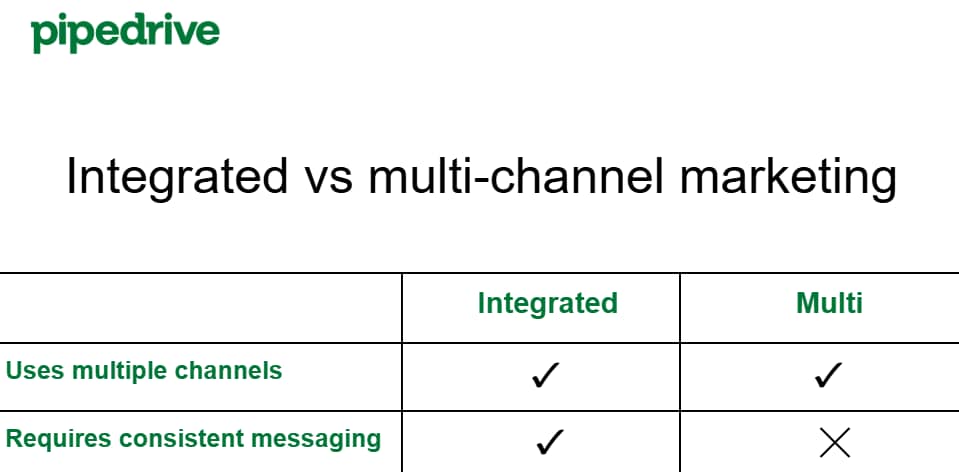
Multichannel marketing means using different channels, such as social media, email marketing and TV ads. Each channel runs independently. For example, a company might launch LinkedIn ads and send email promotions, each with different messaging.
Integrated marketing also uses multiple channels, but coordinates them under one marketing plan. In this case, the LinkedIn ads and emails would all deliver the same messaging and brand experience.
Why integrated marketing matters for SMBs
Marketing teams operate in an environment where customers engage with brands through more touchpoints than ever, including social media platforms, webinars and industry events.
The challenge is that showing up across multiple channels isn’t enough. Gartner research shows that while 86% of customers appreciate personalized communication, 55% will disengage if it feels invasive, and 40% will leave if it’s irrelevant.
Customers expect every touchpoint to align with their needs, interests and behaviors. By unifying campaigns, SMBs can cut through fragmentation and deliver seamless customer experiences at every stage.
Companies that master integrated marketing communications have clear advantages: stronger brand recognition, higher conversion rates and more loyal customers.
This approach ties every sales channel together under a single brand identity.
Download Your Sales and Marketing Strategy Guide
Core principles of integrated marketing
Integrated marketing only works when teams align around a few core principles. The following table gives a quick summary of what those principles are and why they matter:
Principle | Description |
Consistent brand messaging | What it means: Every channel reinforces the same brand message. Why it matters: Builds trust and strengthens brand identity. |
Channel coordination | What it means: Plan and roll out all marketing channel content simultaneously. Why it matters: Creates a seamless experience across the customer journey. |
Customer-centric approach | What it means: Campaigns address customer needs and pain points. Why it matters: Improves messaging relevance and increases sales engagement. |
Data-driven optimization | What it means: Track and adjust marketing efforts in real time. Why it matters: Increases ROI by driving better conversion rates. |
Together, these principles form the foundation of an integrated marketing approach that scales across platforms and delivers unified messaging at every touchpoint.
How to develop an integrated marketing plan
An integrated marketing plan gives your team a clear framework for coordinating campaigns.
Below is a four-step process to help teams align on priorities and measure the impact of your campaigns.
1. Choose the right marketing channels
The first step in building an integrated marketing plan is deciding which channels to invest in.
Base this on where your target audience spends time and how they prefer to engage with your brand.
To make the right choices, start by analyzing:
Customer demographics and pain points
Existing channels’ website traffic and conversion rates
Past campaign metrics such as reach, engagement and sales promotion performance
Competitor activity across social media platforms, email marketing and other digital marketing channels
By identifying which channels matter most, your marketing team can focus resources where they drive the greatest impact.
Tip: Run small pilot campaigns on two or three channels before scaling. Testing early helps confirm where your audience responds best and prevents wasted spend.
2. Create unified assets and messaging
Once you’ve identified the right channels, the next step is to ensure that every piece of content reinforces a single brand message.
Email campaigns, social media ads and landing pages should all share the same tone, visuals and value proposition.
To make this happen, marketing teams should:
Develop a clear brand message and brand positioning statement
Use shared design templates and brand guidelines
Align campaign messaging with customer needs and pain points
Ensure every asset supports a consistent brand identity
Consistent messaging increases the chances that your target audience will remember your campaigns.
Tip: Build a central content hub that stores approved copy, images and design templates so different teams can pull from the same source, reducing duplicate work and preventing off-brand messaging.
Project management tools like Asana or ClickUp can help with this, or you can use a simple Google Drive folder.
3. Assign clear ownership across the marketing team
Every campaign should have defined ownership at each stage.
Assigning specific people to manage campaign strategy, content creation and performance avoids overlap and confusion.
For example, a software company running an integrated marketing campaign for a new product launch might assign:
The content team to create assets
The demand generation team to manage paid media
The communications team to handle public relations
The marketing manager to oversee reporting
Smaller teams may need to wear multiple hats. For example, the content team handles both assets and PR while demand generation runs paid media, reporting and campaign analysis.
Tip: Run a kick-off call before each integrated campaign to review the plan. Assign ownership and clarify deadlines and expectations across the marketing team.
4. Launch campaigns with coordinated timing
Now it’s time to launch campaigns in a coordinated sequence across channels.
Timing matters because launching assets in isolation can confuse the target audience. Coordinated rollouts create momentum and reinforce the brand message.
To align timing, marketing teams should:
Map out a campaign activity calendar that schedules launches across all chosen channels
Sequence assets so that awareness content (like PR and billboards) supports demand-focused efforts (like email marketing and landing pages)
Align timing with customer journey stages to move prospects smoothly from awareness to conversion
For example, say a real estate agency issues a press release to announce the release of a new report. It immediately follows the announcement with social media marketing via LinkedIn and Instagram. Finally, it pushes email marketing to leads.
The company takes all these steps within the same week to maximize impact.
Tip: Use shared calendars or project management tools to keep teams aligned on launch dates and prevent overlaps, gaps and missed opportunities.
How to measure integrated marketing campaign performance
Once you’ve created and launched your integrated marketing plan, the next step is proving its impact.
You need the right key performance indicators (KPIs) to measure performance accurately. These metrics should show how campaigns drive engagement and revenue across different channels.
Below is a table briefly explaining some of the most important KPIs to track.
Key performance indicator (KPI) | Description |
Impressions (aka reach) | What it is: The number of people exposed to your marketing messages. Why it matters: Shows campaign visibility and how well your marketing channels are building brand awareness. |
Engagement | What it is: Actions your target audience takes, such as clicks, shares or comments. Why it matters: Shows whether your marketing efforts resonate with customer needs. |
Conversion rates | What it is: The percentage of users who complete desired actions like signing up or booking a demo. Why it matters: Proves how effectively campaigns guide prospects through the customer journey. |
Revenue attribution | What it is: Assigning sales outcomes to specific touchpoints in an integrated marketing campaign. Why it matters: Helps marketing managers justify spending and demonstrate ROI. |
Website traffic | What it is: The volume and quality of landing page or website visits. Why it matters: Reveals how campaigns drive interest so you can optimize your marketing strategy. |
Tracking these KPIs allows marketing teams to move beyond vanity metrics and make data-driven adjustments that improve performance and return on investment (ROI).
Multi-touch attribution models
While the KPIs above are essential for tracking performance, they often treat each channel in isolation, which creates a partial view of campaign impact.
In integrated marketing, no single channel carries the entire weight of conversion. That’s why multi-touch attribution is important.

Multi-touch attribution models assign value to every touchpoint a customer engages with along the journey, whether that’s a social media ad, an email campaign or a landing page.
Example: an accountancy firm might see strong email click-through rates and assume email marketing drove most conversions.
With multi-touch attribution, the data could reveal that initial awareness came from a LinkedIn ad and the final push came from a webinar follow-up.
Using a multi-touch attribution model, marketing managers can see how different platforms contribute to conversion rates and allocate budgets more effectively.
This data-driven approach ensures integrated marketing campaigns are optimized across the entire customer journey rather than overvaluing one channel.
Successful integrated marketing examples
Integrated marketing is most effective when campaigns combine multiple channels in a cohesive, impactful way.
The following real-world B2B integrated marketing examples show how two small businesses managed this successfully.
UserEvidence
In 2023, customer feedback platform UserEvidence launched The Evidence Gap report, a research-driven piece designed to spark conversation about how B2B companies use proof in their marketing.

The campaign combined influencer marketing, employee advocacy on LinkedIn and coordinated social media activations, ensuring the report’s insights reached the right target audience.
The campaign fueled UserEvidence’s social media marketing for months, extending its life beyond the initial launch
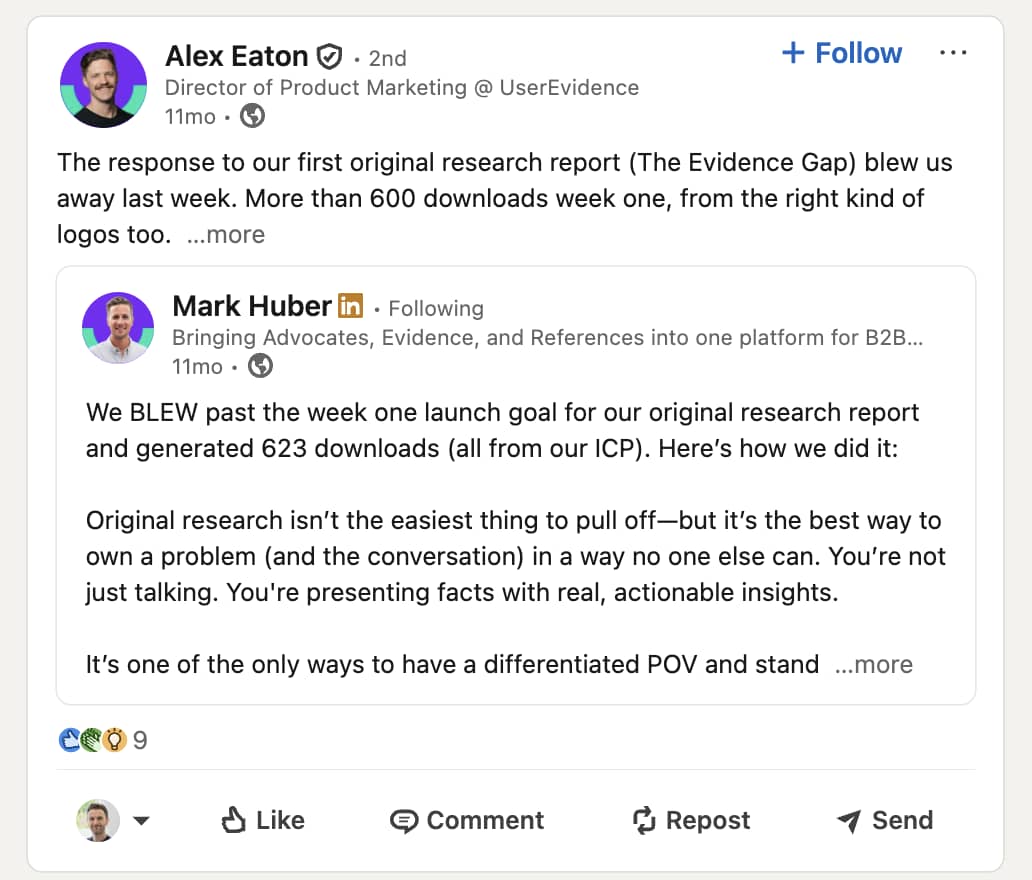
This integrated marketing approach worked because every touchpoint reinforced the same brand message – that proof is critical to closing the gap in B2B marketing.
Key takeaway: UserEvidence showed that a single piece of cornerstone content can sustain engagement and build brand authority over time when amplified across social media platforms and employee networks.
Clay
Prospecting tool Clay’s integrated marketing engine uses partners, creators and customers to drive reach across social media.
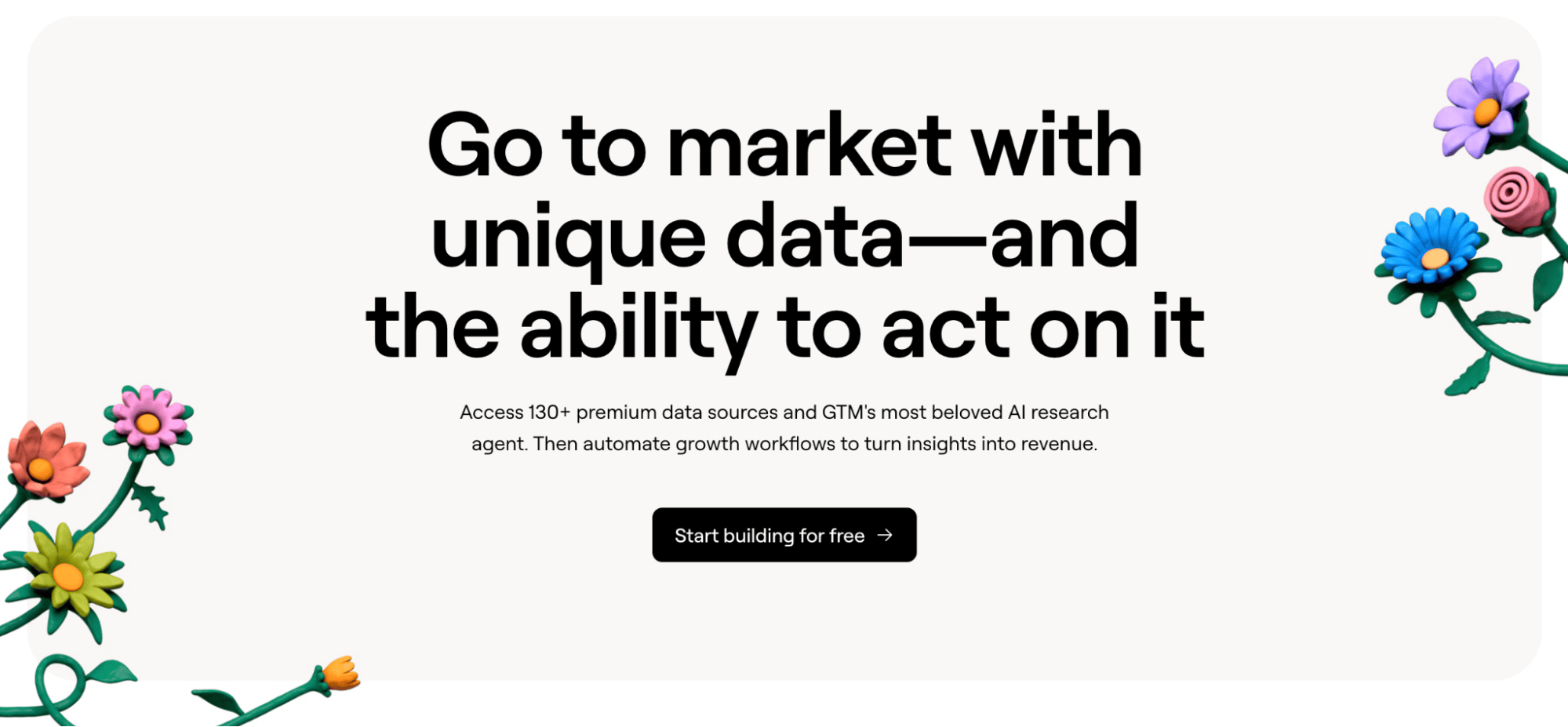
The product is flexible and horizontal, so agencies and experts can build novel workflows like waterfall enrichment, then publish tutorials and demos that Clay amplifies across LinkedIn.
For Clay, partners are an extension of the brand. Advocates congregate in a large Slack community of about 27,400. Clay seeds playbooks, collects feedback and turns the best examples into content marketing that powers a steady drumbeat on search engine-friendly pages and social media platforms.
Key takeaway: Clay shows how an ecosystem-first, integrated marketing approach turns third-party voices into a unified message. This unity builds trust, accelerates brand recognition and compounds results across channels.
Power your integrated marketing strategy with Pipedrive
Pipedrive is a CRM software for marketing and sales teams that gives your team a single place to plan campaigns, track sales and unify messaging across touchpoints.
Here are some ways Pipedrive can help.
Visual pipelines for connected campaigns
One of the biggest blockers for integrated marketing is the lack of visibility between marketing campaigns and sales activity.
If each team works in separate systems, you lose track of how leads flow from the first campaign touchpoint into the pipeline.
Pipedrive’s pipeline management software gives both teams a single view of the customer journey.
You can set up multiple pipelines for different campaigns, products or markets, then track how prospects move from initial awareness to closed deals.
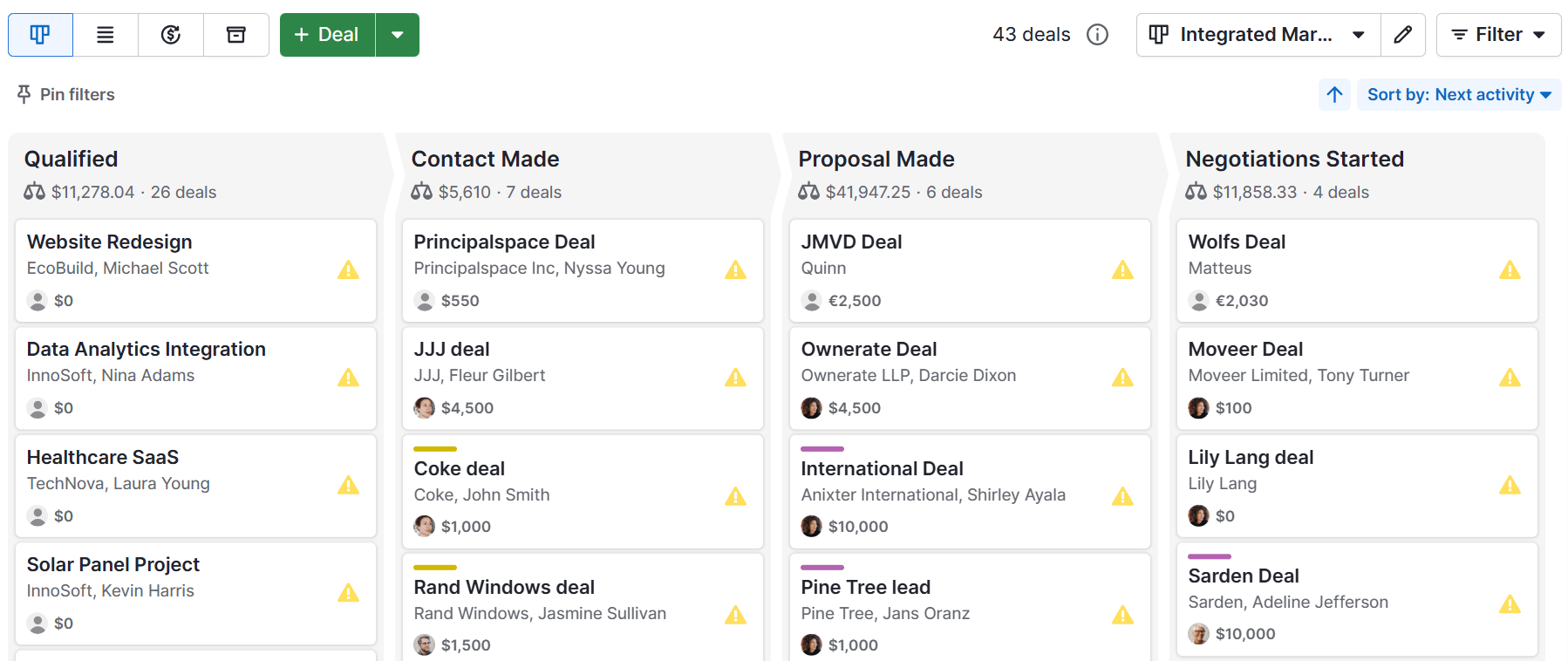
For example, a SaaS company might use one pipeline for inbound leads from email campaigns and another for outbound efforts, keeping progress and performance clear in both streams.
With everything visible in one place, marketing can see which campaigns are creating momentum and sales can see exactly where each lead came from.
Automation for consistent follow-ups
Even strong campaigns can lose their impact if follow-ups are delayed. When leads wait too long for a response, they forget your message and move on to other options.
Pipedrive helps by automating follow-ups so every prospect hears from you at the right moment.
Set emails or tasks to trigger when someone takes an action or reaches a new stage in the pipeline.
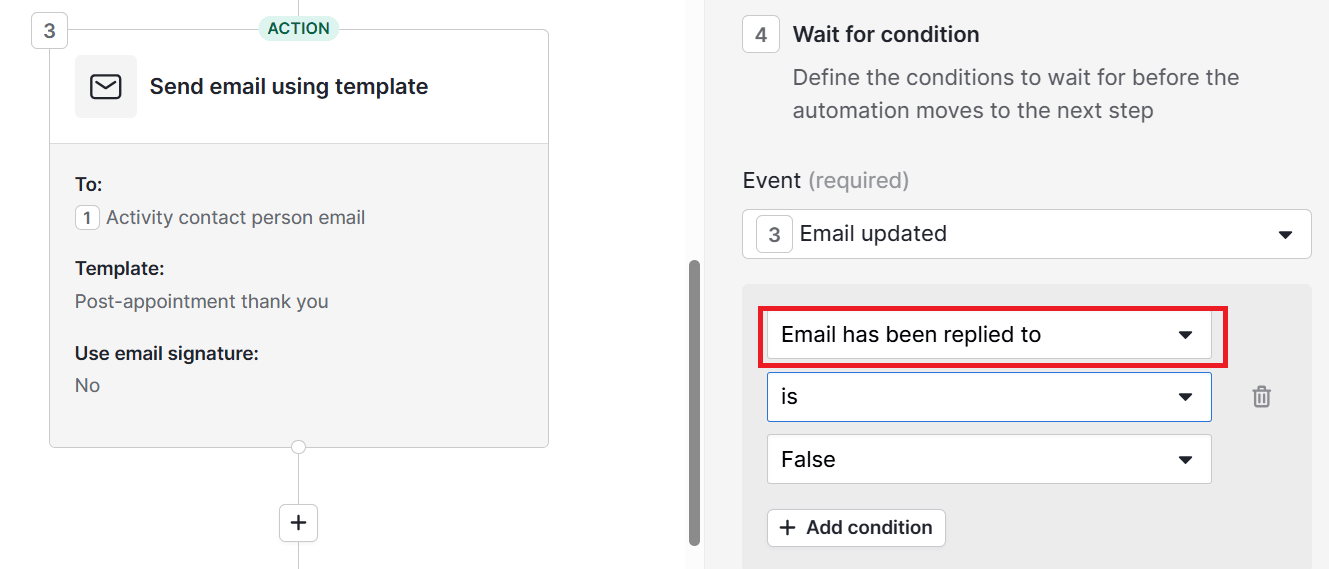
Triggers ensure a consistent experience and allow your team to spend less time on repetitive work.
Integrations for a seamless workflow
Integrated marketing only works when your tools connect smoothly. If your CRM and campaign platforms don’t sync, data gets messy and customers end up with a fragmented experience.
Pipedrive’s Marketplace offers over 500 integrations with sales and marketing tools that tie your workflow together. For example:
Trello. Track campaign creation tasks as Trello cards so marketing teams can manage progress in one place.
lemlist. Send personalized email sequences from lemlist while keeping engagement data in Pipedrive.
Jotform. Capture leads through forms and send them straight into your CRM without manual entry.
Zapier. Automate repetitive marketing workflows, like adding new leads from form submissions into Pipedrive or triggering nurture emails.
Integrations let you streamline your tech stack by combining multiple tools into one access point.
Case study: how Trainify unifies CRM and email marketing
Trainify combined Pipedrive’s CRM with the Campaigns add-on to manage email marketing and sales in one place, reducing tool sprawl and saving two hours per week.
The team created 28 targeted campaigns from within Pipedrive, tying messages to deals and stages so outreach stayed consistent across touchpoints.
How Trainify used Pipedrive:
Built and sent emails with Campaigns using CRM data for segmentation and personalization
Linked campaign activity to the pipeline to monitor movement and adjust messaging in real time
Result: One system for CRM campaign management that keeps integrated marketing communications aligned and measurable
Final thoughts
Integrated marketing is essential for teams that want to grow. Consistent messaging across channels builds trust and keeps the customer journey smooth.
The key is having a plan that connects your channels, aligns your team and shows you what’s really driving results. With the right KPIs in place, you cut wasted effort and double down on what works.
Try Pipedrive free for 14 days to see how it can simplify your integrated marketing campaigns and help you grow smarter.









